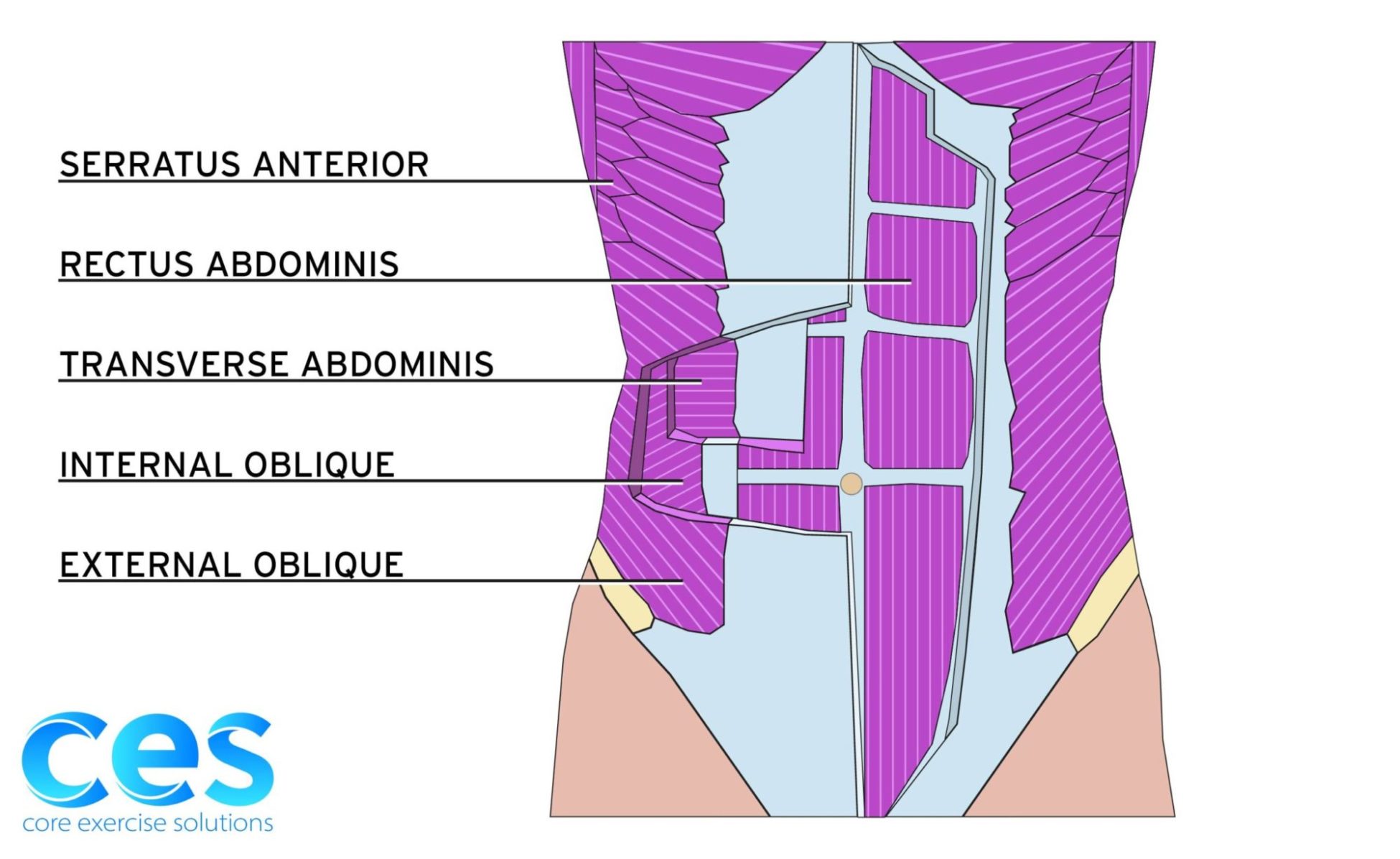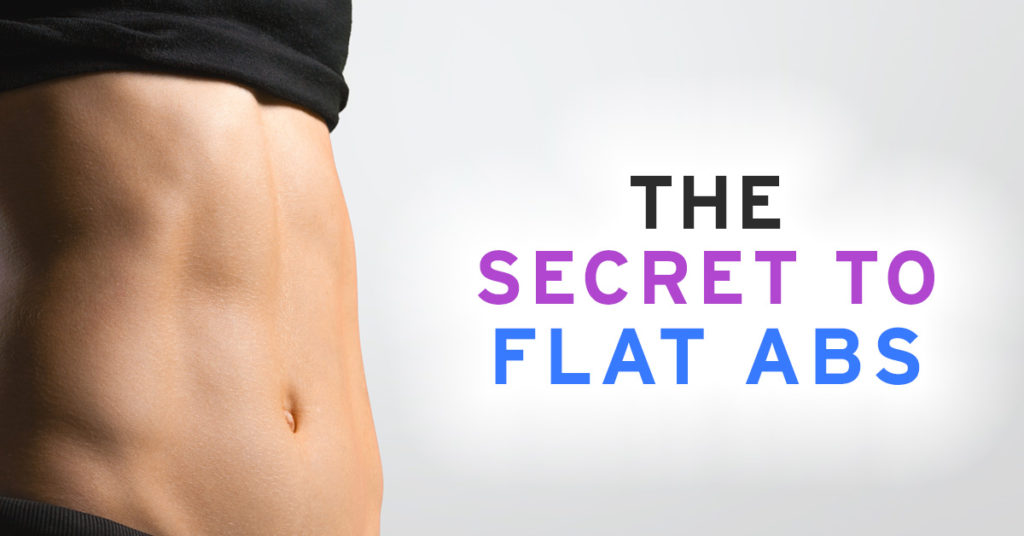Flat abs are an aesthetic sign that you've been hitting the gym and watching what you eat (probably more on the eating side), but as a physical therapist, I'd like to dive deeper into this topic than aesthetics.
I've seen enough patients who have “met aesthetic goals" but are in pain that I think it's a topic worth talking about, because their neck, back, and pelvis pain are being caused by their abdominals or their approach to strengthening them.
Why waste your time trying to be fit if you can't enjoy it by feeling great in the process?! More neck tightness and back pain does not equal life happiness! (Constantly restricted eating trying to reach an unreasonable fat loss goal doesn’t often equal life happiness either, but that’s a topic for another article.)
Our goal as we dive into this topic is to look at how we can create an amazingly strong and supportive core that doesn’t dome, bulge, create excessive pressure or contribute to pain. The human body is truly incredible!
Abdominal Muscle Anatomy

To understand abdominal exercises and pick the right approach for you, it's important to understand the physiology of abdominal muscles. Let's start deep and work our way to the surface.
Transverse Abdominals (TAs or TVAs) are the deepest layer of abdominal muscles. They connect into a sheet of fascia in the front that goes under your rectus muscle. This fascial layer has the ability to glide separately from your rectus (6 pack muscle), which I think is pretty cool; it means that for good or bad, our abdominal muscles can work more independently from each other than one might think.
Internal Obliques (IOs) are the next layer up, and they run diagonally on the sides. The IOs split and form part of the fascial layer below the rectus and part above it. They truly sandwich the rectus muscle. You’ll get more deep abdominal fascial layering on top of the rectus as you go down toward the pelvis.
External Obliques (EOs) are the most superficial layer (closest to the surface) and they run diagonally on the sides like putting your hands in your pockets, opposite of the IOs. The EOs attach to fascia that runs over the rectus muscle. This top layer of fascia is very interconnected with the rectus, unlike the bottom layer of fascia that can glide.
Rectus Abdominis (RA) is the muscle we think of as the 6 pack muscle. It's often the one most targeted by traditional abdominal work (think front planks, crunches and situps). The issue is that this muscle must stay in balance with the ones on the sides, and to make it even harder, the side muscles all need to show up equally as well.
To simplify, the TAs and IOs are more of your stability system, and the EOs and RAs are more of your moving system. If we're all movement and no stability, the body gets cranky. Likewise, if we're all stability and no movement, that too can create tightness and pressure issues.
So yes, there is such a thing as too much TAs. I know -- crazy, right?! Everything must be in balance, even our deep stability system. Patients I've seen with too much TAs tend to have very tight QLs. The QLs (quadratus lumborum) are broad, flat muscles that make up your low back. So if the sides of your back always feel tight, you might have an abdominal imbalance. To get the QLs to let go, you'll need more EOs.
Alright, let's break down a crunch and find out why doing it wrong will make your stomach bigger and create more pressure, whereas doing it with a more balanced focus in mind will make your abs flatter and better manage pressure. (I probably should have led with that statement…!)
Why do my abs stick out?
Your front abdominal wall can bulge (or stick out) for many reasons. The fascia, muscle and skin stretches during pregnancy which can make distention from food more visible. Abdominals can relax after core work if they are fatigued. Pelvis and spinal positioning can literally push the belly out. A tight psoas muscle can act as a pulling force, causing abdominal bulging. As can diastasis recti, a rectus-dominant abdominal strategy, weak lateral abdominals, and more.
Why do my upper abs bulge out?
A fun feature of our abdominals is how many parts they have and the fact that they are influenced by the alignment of the entire body. Our TAs (deep stability abs) have three segments: upper, middle and lower. When the upper TAs are weak, this can cause a bulging of the upper abdominals. Think of your TAs as your corseting muscles. The EOs are also important here because they help control your infrasternal angle. Getting your ribs in and down is often helpful for decreasing this upper ab bulge. To help correct this, you’ll also want to take a look at external intercostal strength. Rib cage muscle control is a major part of our core stability system.
What is abdominal doming?
Abdominal doming is when your rectus abdominis muscle (think 6 pack that runs up the middle) becomes dominant over your other ab muscles. When you pick up your head your rectus pops up, and we don't see support from the other muscles. (Keep reading to check out the video where I demo this!)
Your transverse abdominals, internal and external obliques should all kick in when you lift your head. When they do, your abs flatten. If they don't, then your abs dome or stick out. This is often associated with a diastasis recti and/or hernia. If you have this pattern, then the more ab work you do, the more your abs will bulge.
The body is meant to work together, and when it doesn't, things can go wrong. I also often see a dominant rectus go hand-in-hand with a pooching belly, tight hip flexors, back pain and tightness, and hip pain. It's truly a sign that your deep inner core, a.k.a. your support system, isn't doing its job which makes a lot of other parts angry for having to pick up the slack.
Let's look at how this works.
Does abdominal doming mean diastasis recti? Can you have doming without diastasis recti?
Language surrounding diastasis recti doming and rectus abdominis doming can be very confusing, because the word doming is often used for both.
Diastasis recti is when you have a thinning of the midline fascia that connects the two rectus abdominis muscle bellies. When you increase intra-abdominal pressure in your core, a diastasis recti can “dome” or “cone” out in the middle.

Rectus abdominal doming is what we looked at in the previous section, this is where the entire rectus muscle domes. This is often called a “breadloaf appearance” and is different from a doming out in the midline fascia which is diastasis recti.
You can have both diastasis and rectus doming at the same time. You can also have one without the other. A rectus-dominant strategy is often one of higher pressure with less ability to handle rotational forces and distribute pressure, so I often see a rectus-dominant strategy or rectus doming in those with pelvic floor dysfunction. (That doesn’t mean it’s limited to pelvic floor issues.)
How to fix abdominal doming and ab coning
A big part of fixing the issue from a structural standpoint can be found in the tilt of the pelvis. If the pelvis tilts forward into an APT, it’s going to make more pressure, bulging, doming and coning happen in the front.
Finding your hamstrings and lower TAs is an important step in improving pelvis positioning while helping those muscles that flatten the abs kick in.
From a more muscular standpoint, it’s important to look at how you brace. If you tend to brace out, that creates uncontrolled front pressure which can lead to more doming. Learning how to stop bracing out is an important step for gaining TA strength which helps create the tension needed to corset in the doming, both for rectus abdominal doming and diastasis recti distortion.
Exercises to fix abdominal doming
Abdominal doming often happens from not getting enough of a TA contraction. With a little focus, you can get those TAs on board and get a great abdominal contraction.
Learning how to manage pressure through a balanced abdominal contraction is also very important. You can do this by making sure you don’t overly shorten or scrunch one part of the abdominal wall while letting another part dome out. By lengthening instead of scrunching, you get a much more balanced contraction that can help spread pressure away from the midline and pelvic floor.
With abdominal doming, I’ll often see lower abdominal weakness and lower ab bulging as well. This pattern can also create neck and chest tightness, since the habit of upper ab gripping can cause a lot of tension in the upper abs.
Let’s take a look at getting an even abdominal contraction.
Now, I’d like to give you a bit of a challenge. Can you find your lower abs without over-gripping your upper abs?
We need a balanced core system
We've looked at having a rectus-dominant pattern with not enough lateral (side) abs. What happens if we have too much TA and IO and not enough RA and EO? (Meaning too much stability and not enough movement.) This often creates a much wider diastasis recti situation, but will often feel pretty darn good on the pelvic floor.
Likewise, if someone is in more of a RA dominant pattern or EO dominant pattern, they usually have a narrower diastasis but more pelvic floor issues. (Or they at least have to deal with more pressure down on the pelvic floor, since the EOs create a tremendous amount of pressure. They have to move us, after all! Movement generation creates force and pressure.)
Watch this video where we look at cueing EOs to get the low back QL muscles to calm down.
Thanks for joining me to learn about abdominals. Whew! 😅 This was quite a long article full of great videos, but if you take the time to learn and implement, I think you’ll feel a big difference in your core.
Want to join me for more fun learning? Check out the link below to keep going!
Diastasis Recti Educational Series
Heal Diastasis Recti With a Balanced Core
Cost: Free | Length: 30 Minutes
Try these four exercises to activate, strengthen, and balance the core muscles.
Join us today for this 4-part Diastasis Recti Video Series, absolutely free.
Pelvic Floor and Diastasis Recti Course (Professionals)
What You Need to Know About Pressure Management
Cost: Free | Length: 1.5 hours
Working with pregnant and postpartum clients/patients?
This 6-part course offers key takeaways on breathing, pelvic floor strengthening and diastasis recovery. Sign up and start learning today!


